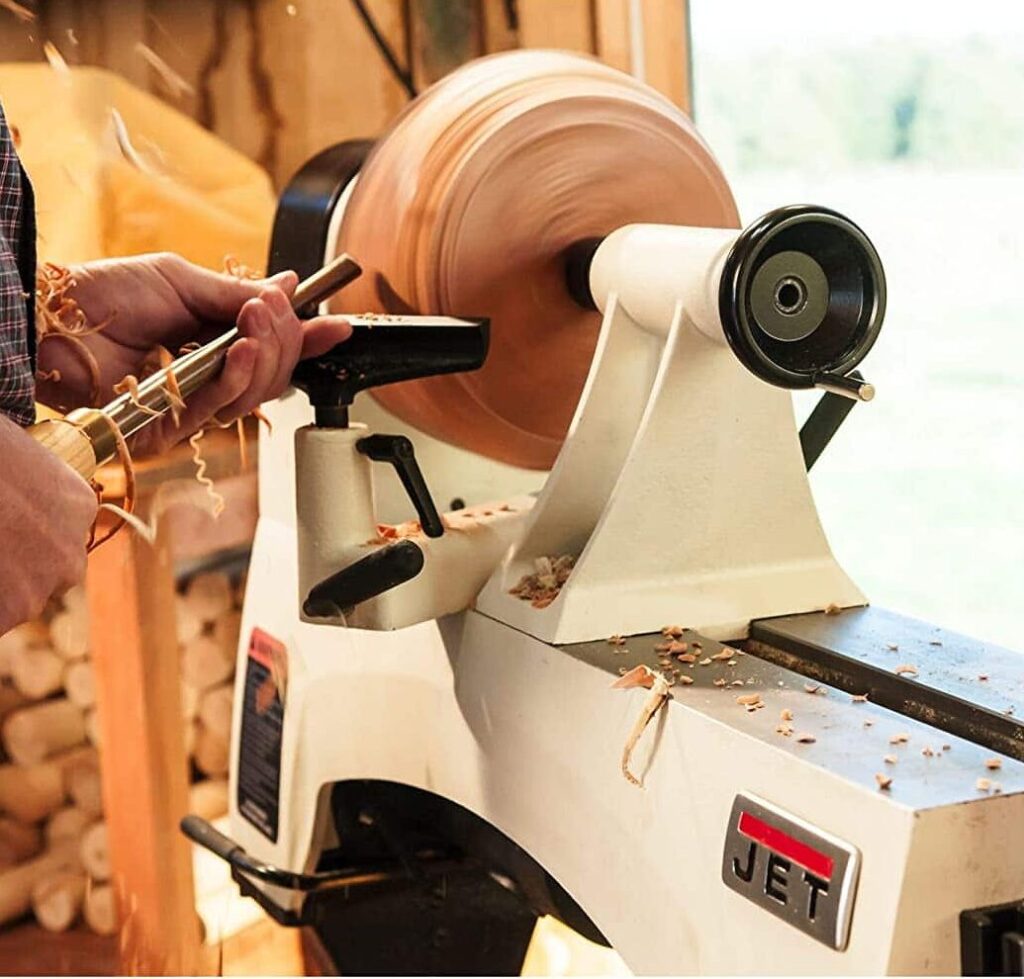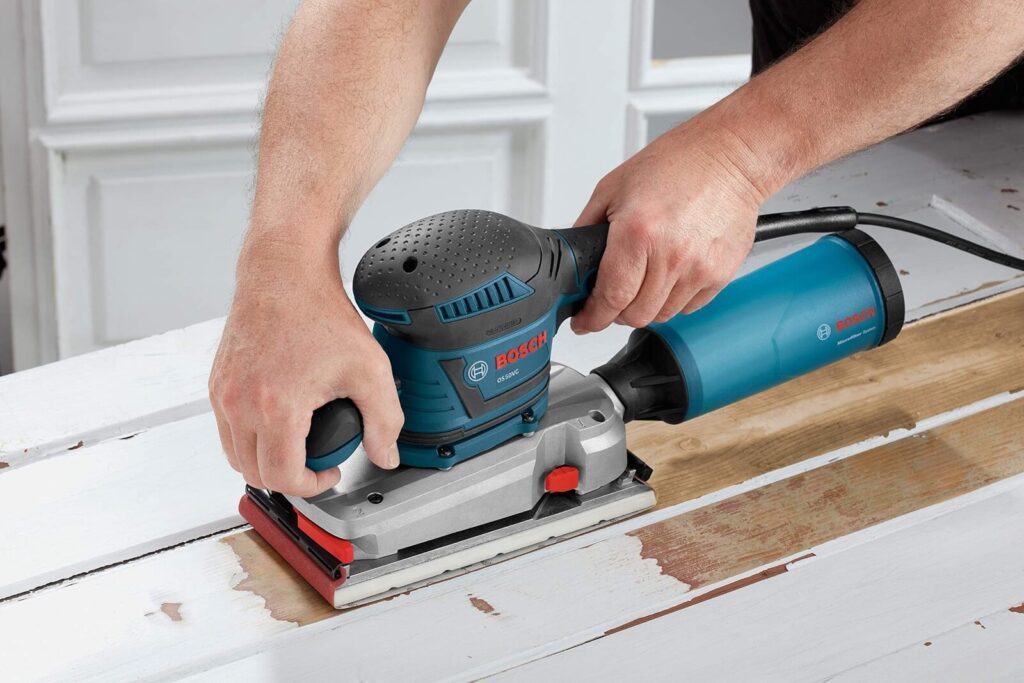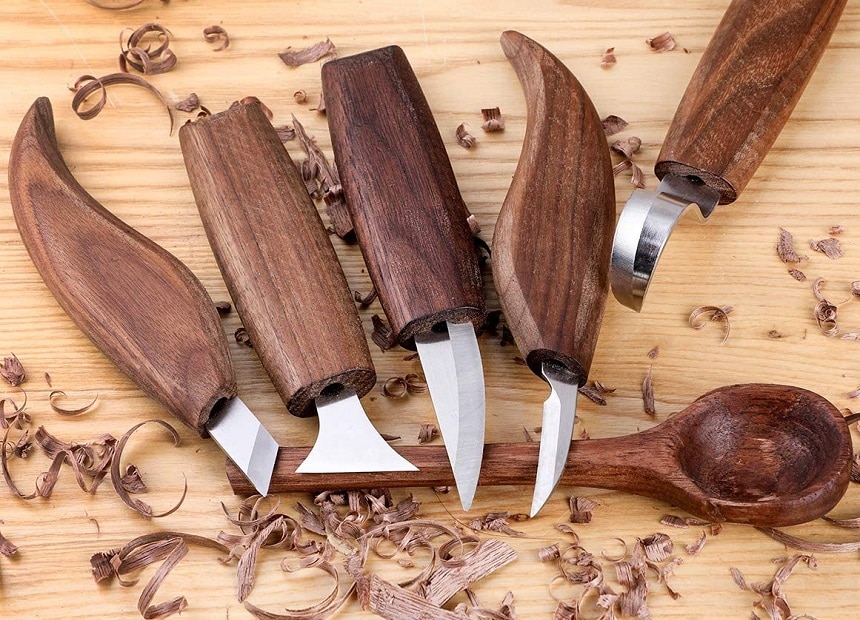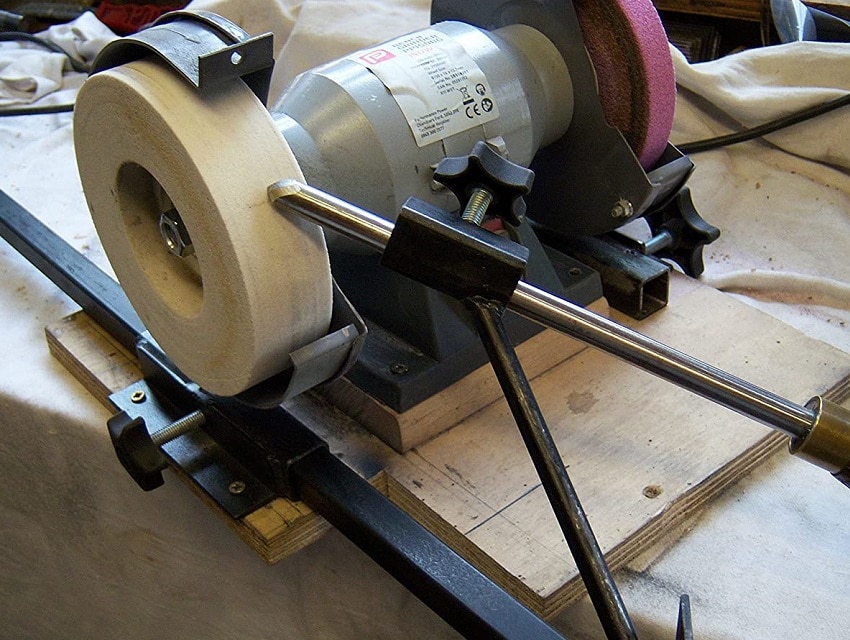

Having to return a trim router is an awful, time-wasting affair that lots of people go through because they didn’t put enough thought into the buying process the first time around. If you want the best trim routers in the market, this is a mistake you can’t afford to be making.
You can put in the work and streamline your selection process to ensure your first purchase is a success. The base, power, speed, amps, weight, power source, and warranty are all indicators of the quality of the offerings. If you’re worried about compatibility with your needs, you’ll also find out about that by looking through these features. It might take you a while to sift through trim router options and see how they stack up next to each other where these features are the judgment criteria. However, rest assured you can shorten the process as most of the work has already been done for you. After all, that’s why we’ve provided the list of five best trim routers below, as well as their pros and cons.
Other features: variable speed motor, straight edge guide, angled cord exit, rugged aluminum base
The Bosch PR20EVS stands head and shoulders above so many options in the market that it’s no wonder it made it to the top of our list. First, you would be surprised at how lightweight this tool is despite being powerful and hosting tons of features.
It comes in a corded electric power source setup and will thus require the right kind of socket nearby to function fully. Once plugged in, you get varying speeds to work with, which should also have an effect on the laminates and wood that you work on. The range offered is between 16000 RPM and 35000 RPM.
Also, the speed range is allowed by the 1HP/5.6 amp motor in the trim router. Notably, the Bosch PR20EVS comes with an edge guide that may come in handy in navigating the edges of your workpiece as you see fit.
Additionally, there’s the depth adjustment system, which, in conjunction with the fixed aluminum base, ensures your get accurate cuts, trims, rabbets, and dadoes. You’ll thus find making micro and macro adjustment to the bit depth is possible. Another helpful aspect is the finger support pockets built into the device to give you a firmer grip.
The Bosch PR20EVS also seems quite versatile. This is evident once you notice the bit changing system. However, to work it, you’ll either need a spindle lock and a wrench or two wrenches if they’re available.
You also find an angled cord exit that’s put there on purpose by the manufacturer. Thanks to it, you’ll get to keep the chord away from your workpiece as you operate the machine.
What we liked: We liked the variable motor speed that allows users to work at their own pace. The tool is both powerful and lightweight, which makes it workable for one-handed operation. This machine features durable construction and a sturdy grip for users thanks to the finger support pockets. Finally, we also appreciate the angled chord and the compatibility with multiple bit types.
What could be better: While making micro-adjustments is possible, we didn’t like how complicated the process is.
Other features: brushless motor, variable speed control dial, soft start feature, dual-LED lights
We’ve also determined that spending more than $100 on the Makita XTR01Z 18V LXT is not such a bad idea. The trim router will definitely give you a lot of value for money once delivery is made to your address.
Unlike every other trimmer listed, you get the 18V Li-ion battery option as the only way to power the motor. This does make portability a critical selling point for this trim router.
Also, even without the corded electricity source, the machine harnesses enough energy from the battery to produce a 30,000 maximum RPM. That said, you can take the speed of the router down a few notches depending on the project and the results you desire.
The motor on the Makita XTR01Z 18V LXT is brushless. This may result in a longer life compared to other trim router options. Additionally, less noise and increased reliability are to be expected as well.
Notably, battery power means you can take the XTR01Z outside your workshop and still get jobs done. However, different locations would mean lighting is less than optimal and may lead to mistakes in the project. Nonetheless, the dual LED lights are there for these types of scenarios, allowing you to work the wood and laminate while stress-free.
There is also the on/off button for easy startup. However, a lock on the same is provided, and this helps prevent accidental trim router startups.
What we liked: The controls of the trim router are easy to use, including the on/off button. You can influence machine speeds between 10,000 and 30,000 RPM. LED lights for darker workspaces are a bonus. The trim router uses a brushless motor. Highly portable since the Makita XTR01Z 18V LXT is battery powered.
What could be better: The Makita XTR01Z 18V LXT is weighty as compared to corded options, which can make hand operation trickier. Also, the trim router is higher priced than most other picks.
Other features: variable speed control, soft start, micro-adjust dial, LED light
As for the Ridgid R2401, the angled cord exit will be instrumental in keeping the wire away from your laminate and wood projects. Aside from that, the trim router’s motor is quite powerful. Consequently, among its capabilities is the power to produce speeds of between 20,000 and 30,000RPM.
Of course, the variable speed control works for various projects, both for DIYers and professionals. Seemingly, the trim router is also a light option, and since these machines are meant for one-handed use, you will likely appreciate this aspect of its construction.
The micro-adjust dial is another aspect that could easily feature on the pros side when listing both pros and cons. The LED light would also be on the same side of that pros and cons list.
There’s also the flat top and quick release lever. When making bit changes, you’ll appreciate these features in the trim router as they make your work easier.
What we liked: We liked that this trim router only weighs 3lbs. Also, the power and the variable speed are much appreciated. Notably, making any adjustments, whether speed-wise or bit-wise, is a cakewalk. The LED light will also help in darker workshops. The soft-start also means less strain on you whenever you turn on the device. Last is the three-year warranty.
What could be better: We disliked the expensive pricing of the trim router. The device gets hot while working.
Other features: single speed, cast-aluminum base, extra-large locking clips, depth ring
For shoppers who desire a single-speed trim router, the PORTER-CABLE PCE6430 is ideal. With it, you get 31,000 RPM, which says a lot about the kinds of jobs the router can handle.
The cast aluminum base is slightly similar to the one in the Bosch PR20EVS, where durability is a concern. This Bosch machine also uses a corded design to derive power from sockets in the house and workshops.
If you get a chance to be up close and personal with the PR20EVS, it’s hard to miss the extra-large locking clips included. One of their functions is depth adjustment, while the other is allowing a quick motor release on the machine.
The PORTER-CABLE PCE6430 is also competing with the Ridgid R2401 for the top warranty offering on the list. Notably, both options are in a tie at 3-years each.
What we liked: The 3-year warranties are not all that common in trim routers of a similar caliber. Additionally, the extra-large locking clips and the depth ring make using this router a cinch. The durability of the trim router is also commendable.
What could be better: Having a variable speed motor would make the trim router more versatile. The vibration as well is too much for some users to handle.
Other features: variable speed control, smooth rack-and-pinion depth adjustment system, dual bright LED lights, rubber covered handle
The power of the Avid Power MW104 rivals that of the Ridgid R2401. That is, nevertheless, not the only thing it has going for it. The variable speed is also there and spans quite a wide range of between 10,000 and 32,000 RPM.
Even from the image of the Avid Power trim router we have provided, you can see that most of the needed accessories are given to buyers. Of course, this allows you to plug and play the device once it’s in your hands.
Additionally, the rubber covered handle ensures comfort and a firm grip even as you deal with the machine’s vibrations. Furthermore, the rack and pinion depth adjustments system is one reason why buyers find the router a cinch to use.
The fact that you get dual LED lights built into the Avid Power MW104 is another pro feature. As for the weight, it might make using the trim router a bit harder.
What we liked: A rubber-covered handle enhances grip, thereby reducing the likelihood of accidents. The machine is powerful and has an impressive range of speeds to select for use. Buyers get all the needed accessories with the purchase. The depth adjustment system also makes use much easier.
What could be better: The machine is quite heavy. A warranty is lacking from the offering. This trim router also gets hot when used.
Seeing as though you don’t want to waste your time or money, the buying guide below should do you some good. With it, you’ll avoid some of the traps set by marketers who make their mediocre offerings seem like bargains.
A wood router is a sort of power tool used to work on wood or plastic. If you’re using it correctly, the router can hollow out an area in either plastic or wood as well as cut fancy corners.
The trim router, on the other hand, is a smaller version of the same tool. As such, it can handle similar tasks on a smaller scale and thus is used mainly on laminate and smaller pieces of wood.
You can also find a trim router being used to create rabbets, insets, and dadoes.
The more you use trim routers, the more you’ll see that each model has different capabilities. In an ideal world, you’d test each model to see if it works for you. However, you don’t often get that luxury in today’s world. That said, there is a workaround where you can use the machine’s features to see what it can do. For this method to succeed, you first need some basic knowledge of all trim router features. We have provided that information and more in the features section below.
One way to differentiate trim routers is by whether they have a fixed or plunge base. Those with fixed bases feature bits that cannot be moved once the cutting depth is set. As such, if you set it at half an inch, it will stay that way till you change it. Also, you’ll be able to see the half-inch exposed bit below the base as you work.
Plunge based trim routers also live up to their name. You set the depth of the bit, although it won’t be visible under the base. However, it does have springs, and consequently, the user can push the bit down through the material they are working on to the set depth.
When working on top of a board, most people find the plunge base trim router to be better. Consequently, in applications such as dadoes, rabbets, insets, and fluting, the plunge option is the go-to pick. Moreover, if you want a plunge base trim router to work just like a fixed base option, all you have to do is lock it in place.
You’ll also select the power in your trim router based on projects you plan on tackling. Simple tasks don’t require much power, so a lower HP will work just fine. Conversely, if you’re using large bits to make plunge cuts, you may need more power as it will help drive the bits through the wood or laminate.
That said, even if all your current projects are simple and don’t need much power, you may come across a job in the future that does. As such, the more powerful trim router may be a better option in the long run.
Notably, you shouldn’t expect trim routers to have similar power levels as their larger wood router counterparts. As for the small routers above, the 1.25HP power of the Ridgid R2401 is among the highest power ratings you’ll get.
Furthermore, you’ll need to pick between variable and fixed speed trim routers. Fixed speed machines like the PORTER-CABLE PCE6430 have a constant working speed, as the name suggests. In this case, it stands at 31,000RPM.
Their competition the variable speed options give control of the motor speed to the user. With the Makita XTR01Z 18V LXT, for instance, you can select a speed between 10,000 and 30,000 RPM.
Notably, slower speeds offer more control to the user over how the workpiece turns out. Conversely, faster speeds make slight work of cutting through various tough materials. As such, even if you’re choosing a variable speed option, pick one with a high maximum speed as well.
Trim routers like the Ridgid R2401 with a soft start feature don’t jump to the top speed once they are turned on. Instead, they ease you into the work session by gradually raising the speed and power.
Those that start working at top speed need extra care as they can lurch the moment they are turned on. If the grip isn’t firm enough or you’re unprepared, you can end up injured.
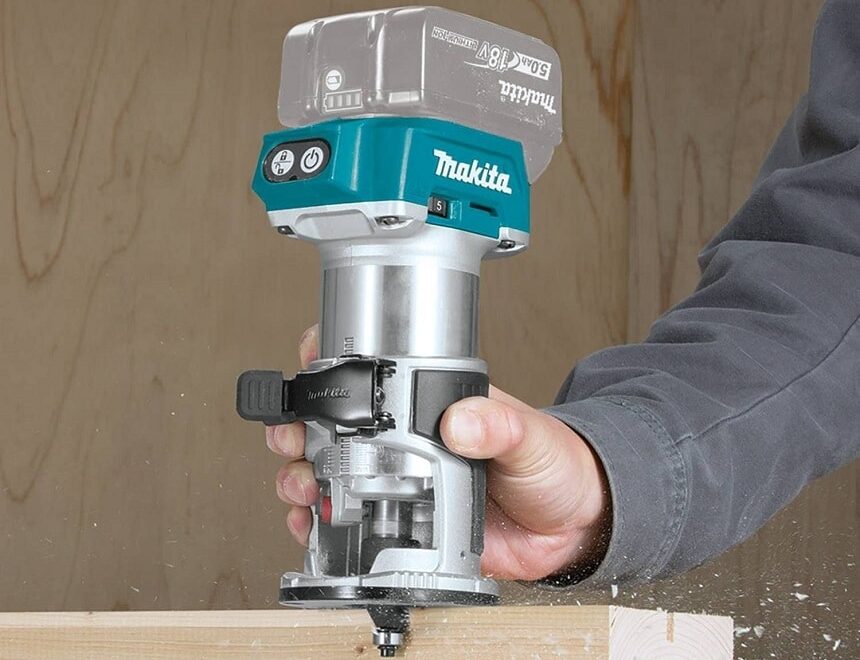
The trim router you pick also dictates the bits that you have access to and their sizes. As such, confirming that the bits you want are compatible with your machine of choice is a good idea before committing to the purchase. Some, like the Avid Power MW104, even come with a few bits included in the package.
The warranty can also be a metric of judgment on the quality of the trim router. Machines of this caliber with a more extended warranty are preferred. This is because you get more extended protection from loss or from having to deal with a defective product. As such, the PORTER-CABLE PCE6430 and the Ridgid R2401 are better than most of the competition where warranty coverage is of concern.
The trim router you pick should also not be a pain to clean and maintain, as this will sap the joy out of using it.
Extra features in trim routers also come up from time to time. An example is the dual LED lights in the Avid Power MW104. If you can’t see the workpiece very well, all you need to do is turn the lights on to solve the problem. This is not something you can do with most other trim router models.
Another example of an extra feature is dust collection, which might be handy since you know how messy woodwork can be. Notably, all extra features in a trim router will add value and, as such, may make specific options more attractive as potential purchases.
With the above use scenarios to start you off, we’re confident you can find even more creative ways to use the trim router you end up buying.
Nevertheless, we can recommend rereading this write-up so you can make a better selection for yourself once you encounter the various options on offer. The buying guide is handy for the job of educating you on what to look for.
As per our trim routers list above, our three favorite picks include the Bosch PR20EVS, the Makita XTR01Z 18V LXT, and the Ridgid R2401.
The Bosch PR20EVS offers a variable speed motor and is our editor’s choice option. Additionally, the tool is impressive in terms of power for such a lightweight device.
As for the Makita XTR01Z 18V LXT, it is the only cordless option on this list. Despite that, it is still as dependable as the corded counterparts, thanks to the brushless motor. The soft-start and the LED lights are two extra features that you might like in the device as well.
Another option with a soft-start feature to make it to our top three picks is the Ridgid R2401. Additionally, the LED light is another feature it shares with its predecessor. Making adjustments is also going to be a walk in the park. To top it off, the three-year warranty is appreciated.
These three are our favorites according to the features that we prioritize. Since most people prioritize different features, you might have a different top three selection than us. If so, comment below and tell us why your top picks differ from ours.

